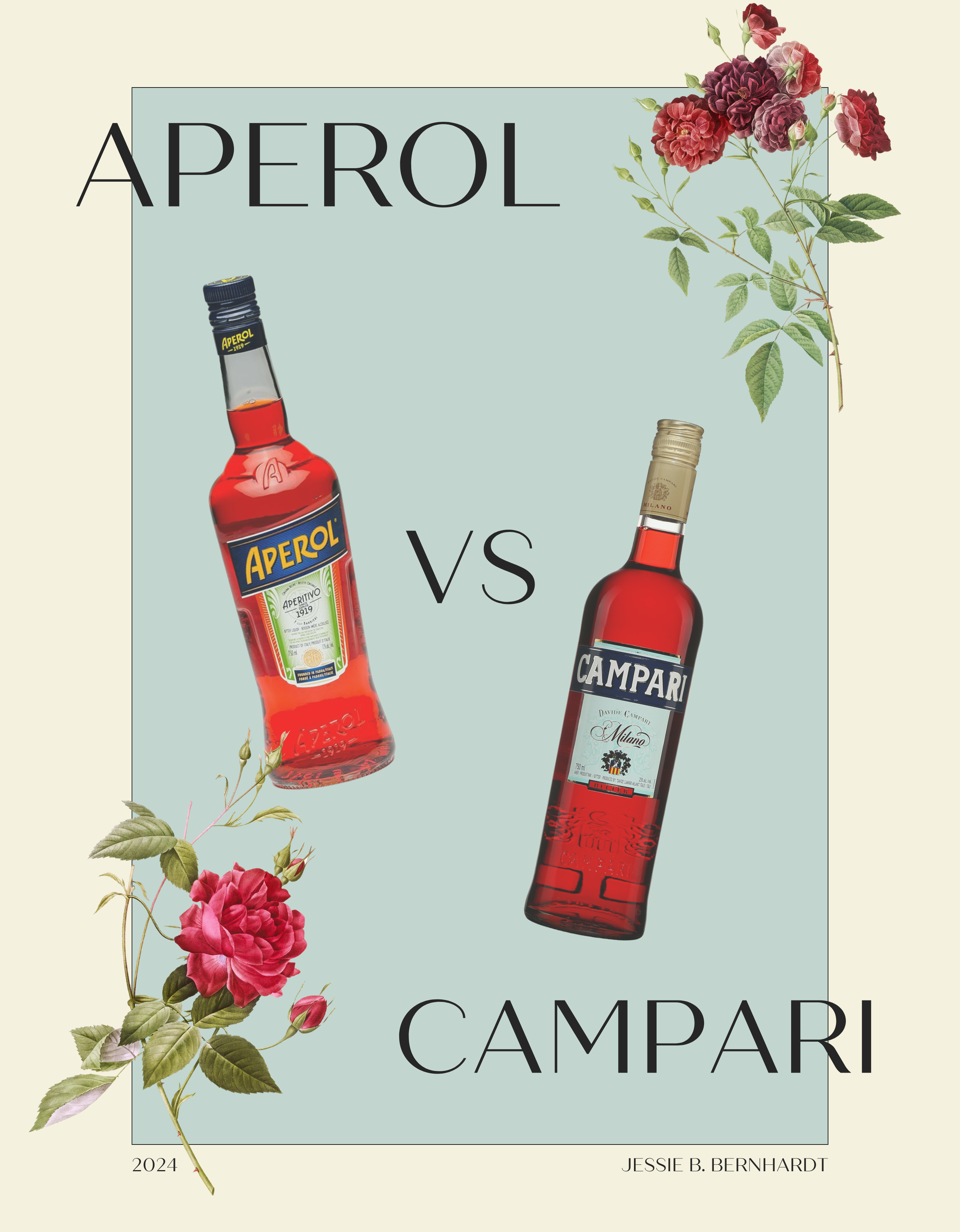Aperol vs Campari: What's The Difference Between The Two?
Aperol vs Campari: What's The Difference Between The Two?
Aperol and Campari are two popular Italian aperitifs that have gained worldwide recognition in recent years. These bitter liqueurs, both produced by the Campari Group, are often used in classic cocktails and have become a staple in many home bars.
But what exactly is the difference between Aperol and Campari? Can they be used interchangeably in cocktails? And is Campari still made from beetles? Let's take a closer look at these two iconic Italian spirits and explore their distinct differences.
History and Production
To understand the differences between Aperol and Campari, it's important to first understand their history and production. The origins of Campari can be traced back to 1860 when Gaspare Campari, a bartender and distiller from northern Italy, created the recipe for what is now known as Campari. His son, Davide Campari, continued to produce the bitter liqueur and eventually renamed it after himself. Campari's popularity grew and it was soon being sold internationally.
On the other hand, Aperol was created by the Barbieri brothers, Luigi and Silvio Barbieri, in 1919. They owned a liquor store in Padua, Italy and wanted to create a lighter, lower alcohol alternative to Campari. Aperol, with its lower ABV of 11%, quickly gained popularity and became a staple in Italian aperitivo culture.
Flavor Profile
One of the key differences between Aperol and Campari is their flavor profiles. Campari is known for its bold and bitter taste, with notes of herbs, fruit, and spice. It has a deep red hue and is often described as having a complex flavor. Aperol, on the other hand, has a sweeter and fruitier taste with a lighter and more refreshing profile. It has a beautiful bright orange color and is often used in cocktails to add a touch of sweetness.
The ingredients used in each spirit also contribute to their distinct flavors. Campari is made from a blend of herbs and fruit, including gentian root, bitter orange, and rhubarb. Aperol, on the other hand, includes ingredients such as orange peel, cinchona, and rhubarb. Both spirits also use artificial coloring to achieve their vibrant colors.
Can I substitute Aperol for Campari?
One of the most common questions surrounding Aperol and Campari is whether they can be used interchangeably in cocktails. While both spirits are Italian bitters, they do have distinct differences in flavor and ABV. Aperol's lower ABV makes it a bit sweeter and less bitter than Campari, so it may not provide the same depth of flavor in cocktails. However, some recipes may still call for equal parts of Aperol and Campari, such as in the popular Aperol Negroni or the Negroni Sbagliato.
Do Campari and Aperol taste the same?
While both Aperol and Campari have a bitter taste, they do not taste exactly the same. Campari has a more intense and bitter flavor, while Aperol has a sweeter, fruitier taste. Depending on your taste buds, you may prefer one over the other. If you enjoy a more bitter taste, Campari may be the better choice for you. But if you prefer a lighter and sweeter flavor, Aperol may be your go-to.
Is Campari still made from beetles?
A common misconception about Campari is that it is still made from cochineal beetles, also known as carmine. In the original recipe, cochineal insects were used to give Campari its deep red color. However, in the 2000s, the Campari Company made the decision to switch to artificial coloring, making the spirit suitable for vegetarians and vegans. So no, Campari is no longer made from beetles.
Best Uses for Aperol and Campari
While both Aperol and Campari can be used in a variety of cocktails, they each have their own unique best uses. Aperol is often used in light and refreshing cocktails, such as the Aperol Spritz or the Caffe Campari. Its lower ABV and fruity flavors make it a popular choice during the summer months. On the other hand, Campari is best used in cocktails that require a bitter component, such as the classic Negroni or the Jungle Bird. Its higher ABV and complex flavor make it a great addition to more sophisticated cocktails.
Aperol vs Campari: The Verdict
In conclusion, while Aperol and Campari have a lot of similarities, they also have distinct differences that set them apart. Both spirits have a rich history and are iconic Italian aperitivos.
Aperol, with its lower ABV and sweeter taste, is best used in light and refreshing cocktails, while Campari's higher ABV and more bitter taste make it a great addition to more complex drinks. So next time you're at the liquor store, grab a bottle of both Aperol and Campari and experiment with these two vibrant and flavorful Italian liqueurs. Cheers!
You might also like…
Hi, I’m Jessie!
I’m a mom, wife, marketer, home cook, and connoisseur of simple and indulgent pleasures.



















If you love pumpkin spice as much as I do, you’ll love this list of the best pumpkin flavored coffees for fall!